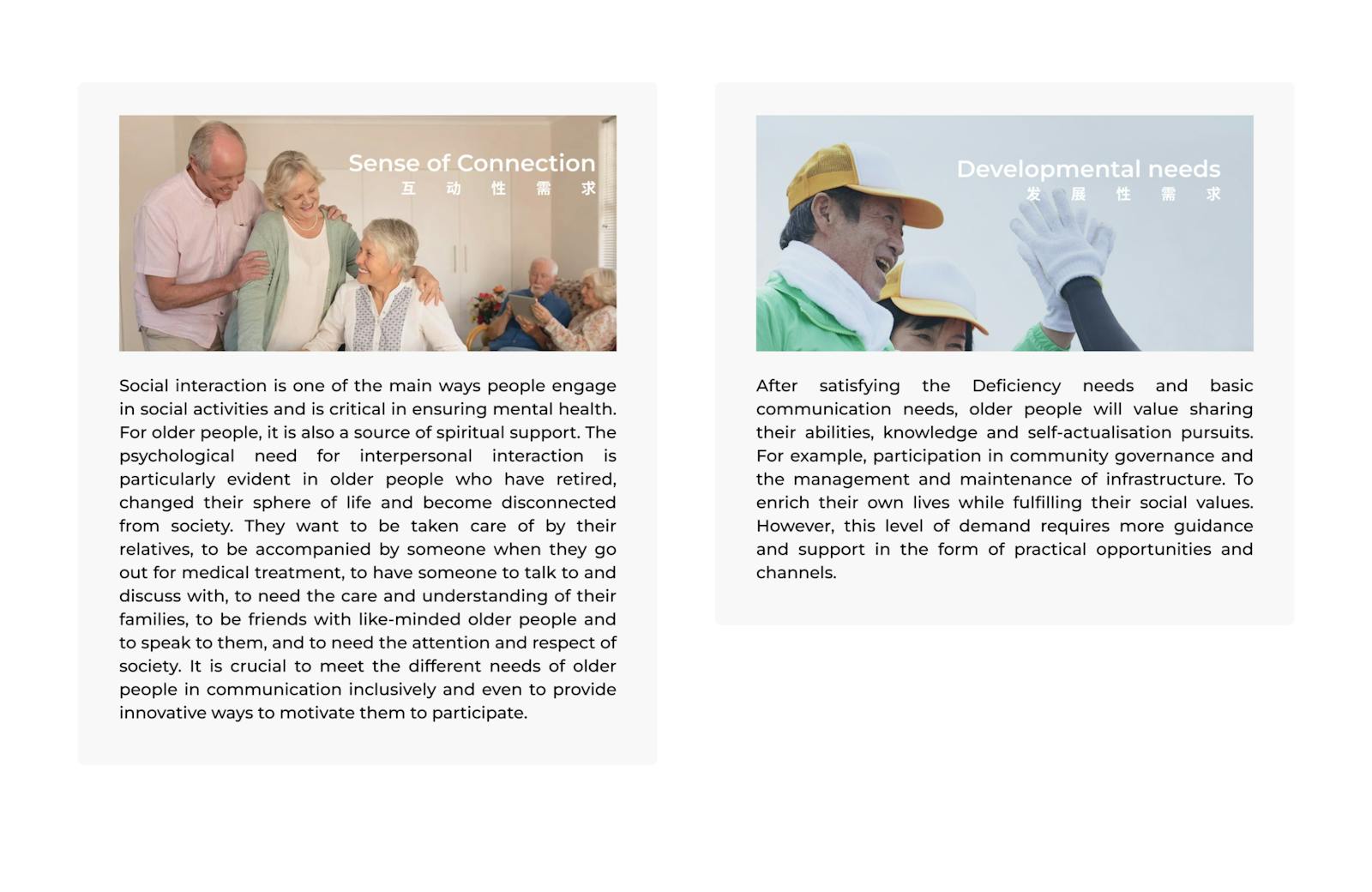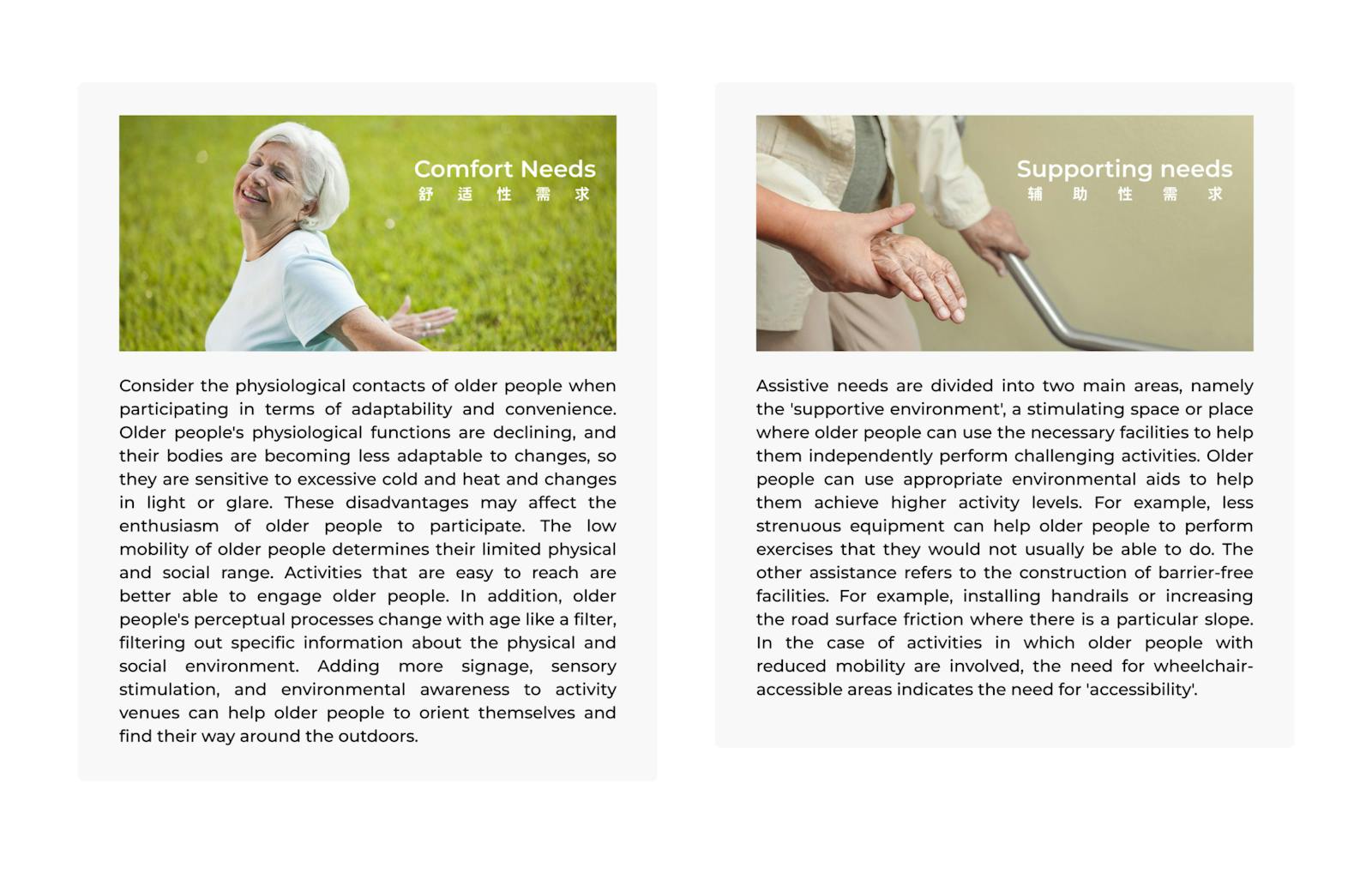GUANG DAI
The Recalibration of Ageing-Life Circle in Post-Pandemic Era
Summary
In China's ageing society, communities are in a state of rapid development and transition. Drawing upon the existing framework of the '15 min Community-Life Circle Model, this practice-based research project proposes to empower communities by building intergenerational solidarity communities. Residents, especially older adults, participate in their communities, relate to them, self-actualize in them, and contribute to their communities betterment. A combination of participatory action research methodology and the practice of design is used to arrive at creative solutions. The design outputs include community empowerment for older people, a participatory design toolkit and a design guide.
Additional info
MRES Design
Supervisor: Laura Ferrarello
Introduction
The Concept of "Active Ageing"
The 'Active Ageing' concept emerged in the 1990s, reflecting a growing emphasis on the links between health, independence, participation and ageing. The concept focuses on encouraging older people to participate in society and communities, recognising the value of older people, and emphasising the different roles they play in participation. "How can we enrich the lives of older people in their later years? How can we improve the life satisfaction and well-being of older people? How can we help older people realise their values?" The pathway to realise these expectations is through social participation. Social participation is the core and essence of active ageing, and attention should not only be focused on issues such as how to protect the physical and mental health of older people but also more on the participation needs and value manifestation of older people.
In recent years, China has introduced the "Community-based elderly care" and "Community-life circle" programmes to address the contradiction between the supply and demand of elderly services on ageing and community renewal during urbanisation.
Ageing-driven Community Changing
By the end of 2020, China's elderly population aged 60 years or older has reached 264 million, accounting for 13.5% of the total population. (7th National Population Census Bulletin (No. 8), 2020) This figure indicates that China has officially entered the stage of moderate ageing. Of these, 35.8 million are aged 80 and over and are expected to increase to 159 million in 2050 (Figure 1). The elderly are likely to face even more severe health problems. The increase in the proportion of empty nesters in smaller and older households is also weakening.
"Community-based elderly care" refers to a system of home care services that focuses on the family and the community, with the main elements of care and spiritual comfort for older people and the primary forms of home-based services and community daycare (Xu and Chow, 2011). Unlike traditional family and social care, community-based care is supported by volunteers and social organisations that assist older people in need, reducing the burden of family members while ensuring that they can live in a familiar environment rather than in a centralised elderly centre.
REVIEW: LIFE CIRCLE THEORY AND PRACTICE SOURCES
Research Question
"How can a post-pandemic community be designed to activate peer to peer and intergenerational solidarity with the participation of the Chinese senior population? "
Drawing upon the existing theory of the "15 min Community-Life Circle", This research project aim is sharping and recalibrating a post-pandemic intergenerational solidarity neighborhood. To be more specific, as a researcher and designer, the objectives are to combine 'empowerment' and 'active ageing' as two core opportunity, based on the elderly-oriented design position and principles:
- Discuss the relevance of different characteristics of the elderly's socialization, ways of participating in society and the community, and the barriers to social participation during the epidemic. Identify further the diverse abilities and resources of older people in the community and design a framework for older people's role participation. The design also explores the possibilities of intergenerational activities and the participation needs of older people by using the co-design approach to explore the demographic structure of the community.
- Participatory design guidance is proposed to activate the creativity and activism of the community residents. It aims to promote the community participation of older people through design participation, enhance community vitality, empower community residents, improve community inclusion and achieve intergenerational solidarity.
Evolving Methodology: Action Research and the Practice of Design
Action research is a systematic data collection step to address a specific, practical problem.
This method involves four steps: 'Plan', 'Action', 'Observe' and 'Reflect' (Lewin, 1946). Reflect' (Lewin, 1946) and then restart the cycle with a 'revised plan', an exploratory process that leads to improvement and change.
The project uses Participatory Action Research to coherently link research ideas and results, and to explain each research process, touchpoints related to the 'ageing-life circle', new findings and opportunities and plans for the next round. Opportunities and plans for the next cycle, culminating in a participatory design guide for building an 'intergenerational solidarity ageing-life circle'
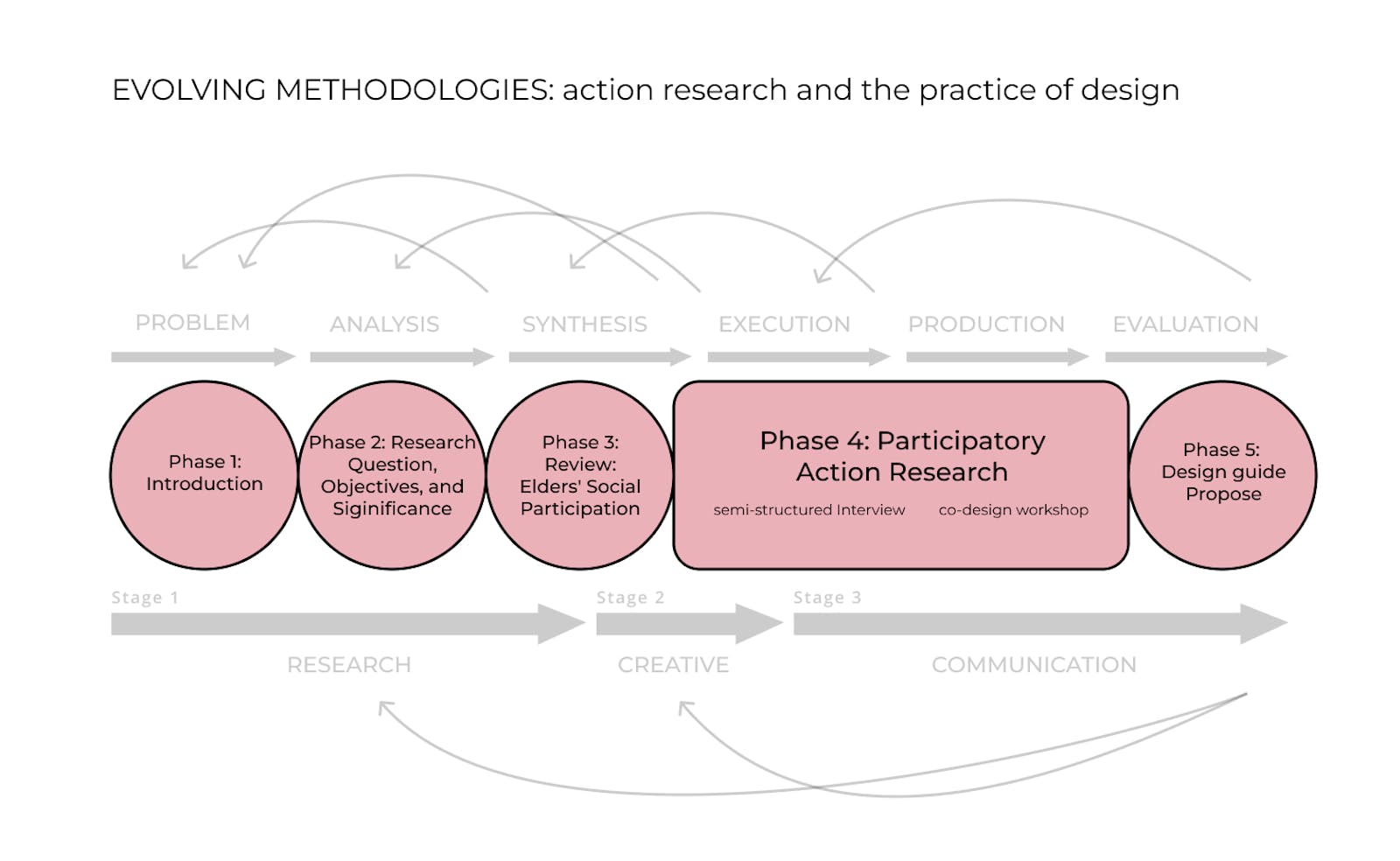
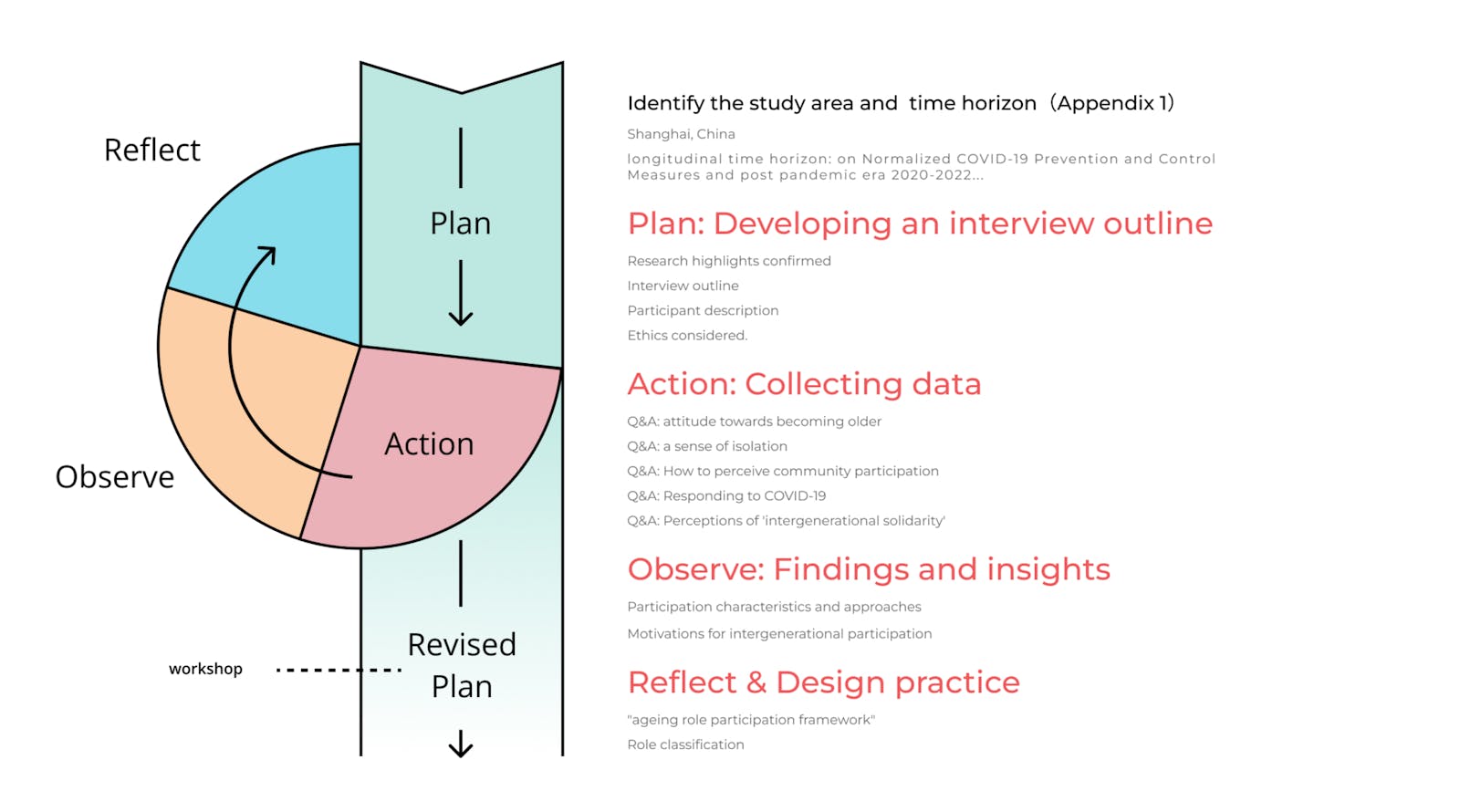
Research Cycle1: Interview-based
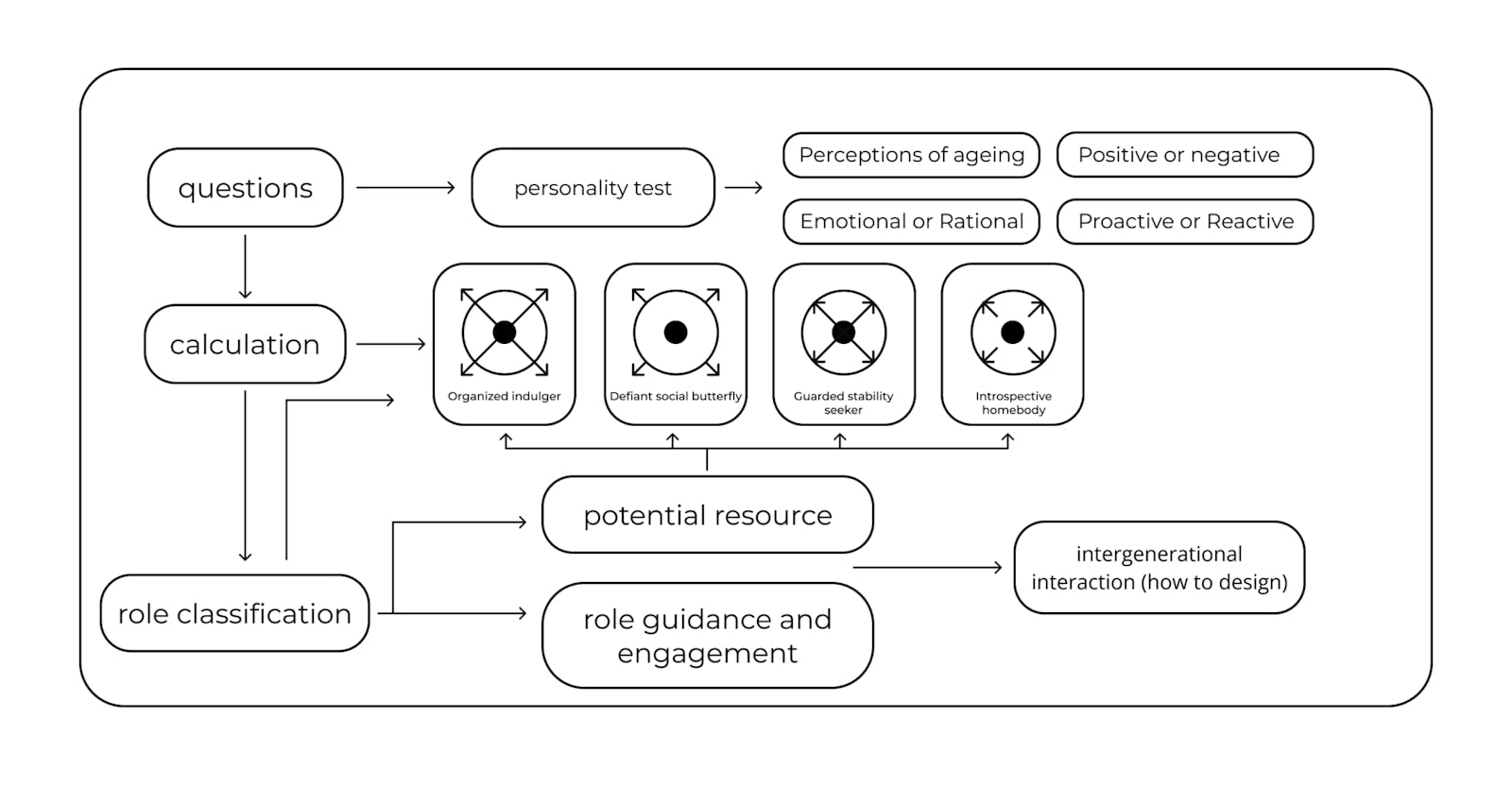
"Ageing Role Participation Framework"
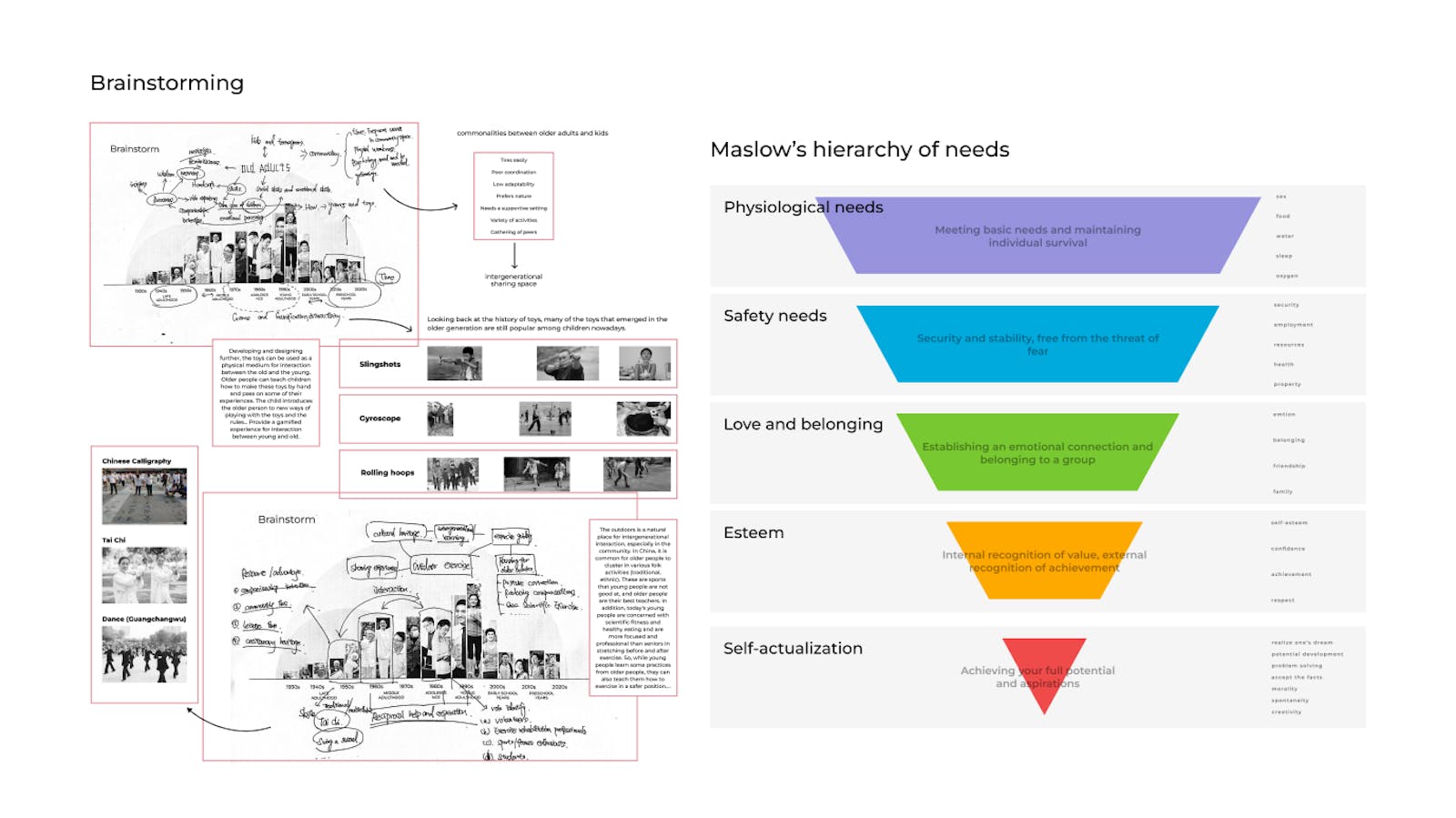
RESEARCH CYCLE 2 - Co-Design Workshop
Findings and Insights
I integrated these design outcomes into a' participatory design guide' to strengthen the motivation and enhance the value of the participation of older people and other generations in community services and intergenerational activities. By providing opportunities for community residents to act and create on their own, the design of community services and activities can also be more responsive to users' needs and abilities. With 'empowerment' at the core and 'design intervention' as a compliment, the 'social participation and 'design participation'.
Community and social stakeholders interplay in building an intergenerational solidarity ageing-life circle. The goal of the professional team, led by the designers, is not to design a specific solution for any group but to act as a resource, pointing the way to needs, providing solutions and calibrating them with appropriate advice and interventions.
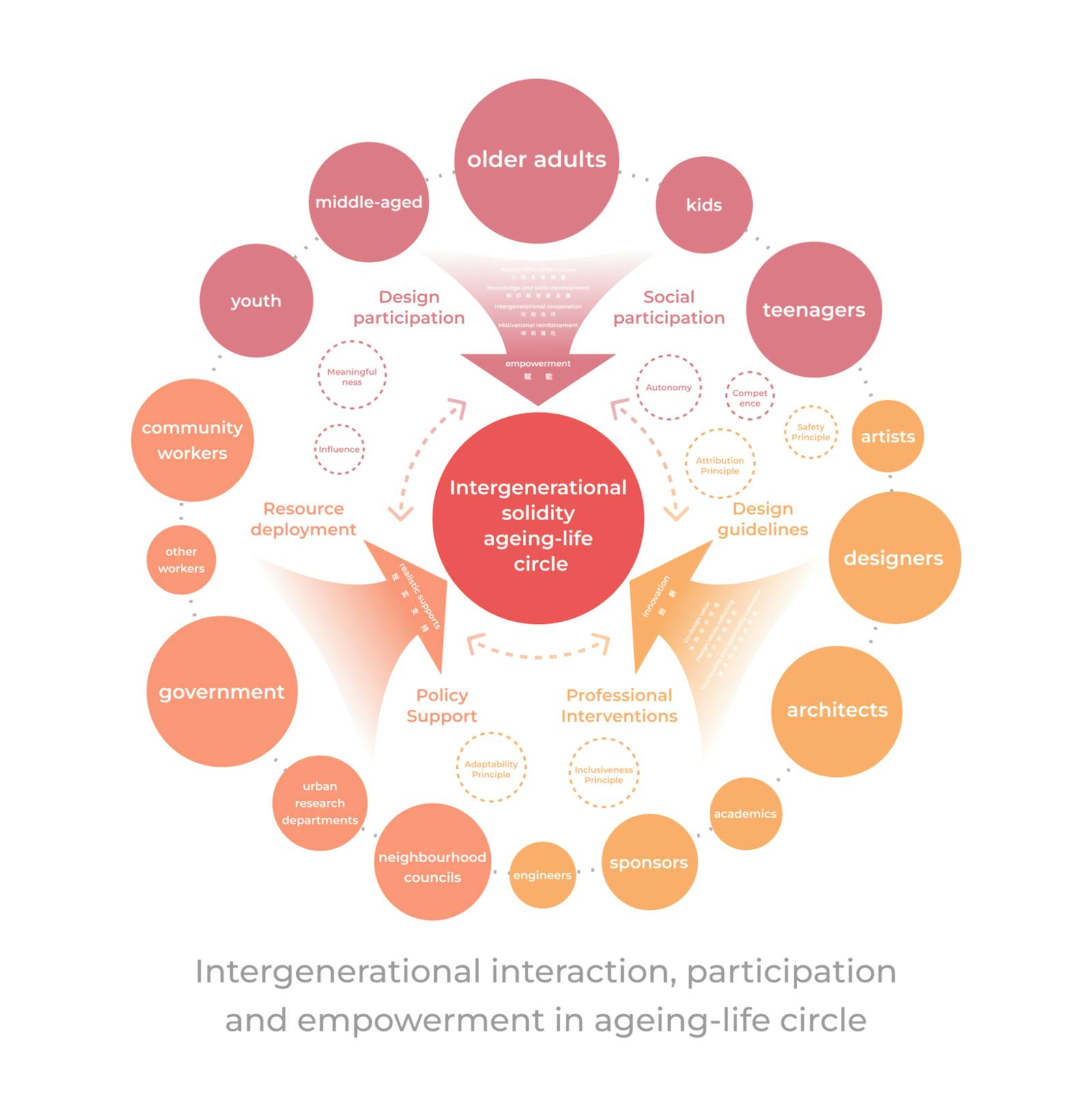
Participatory Design Guide
''Staying connected to family and community is important to all of us. ''
Ageing is a dynamic process. As we age, we accumulate wisdom, insight and a wealth of experience. Our goal is to help turn the abilities and knowledge that older people have accumulated over a lifetime into a resource that can be shared through intergenerational engagement. We can use it to promote reciprocal and collaborative, diverse and inclusive co-existence in our communities.
Concerning Maslow's Hierarchical Needs Theory, we have divided the issue of older people's needs for types of activities and venues for social and community participation into four aspects as design toolkits to help participants to understand better and empathise.
